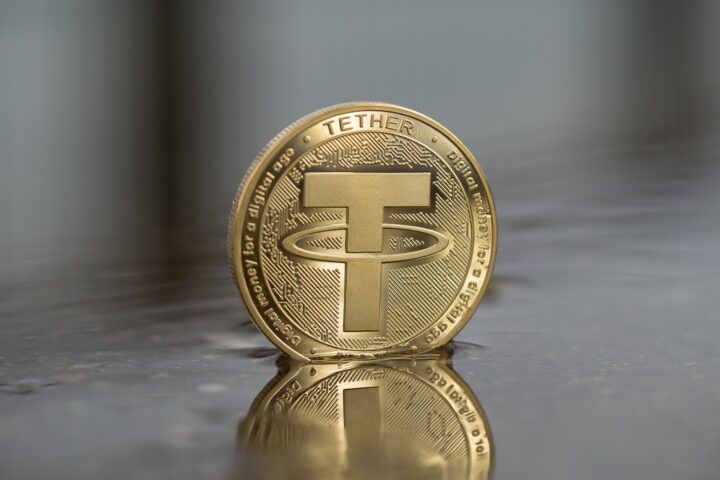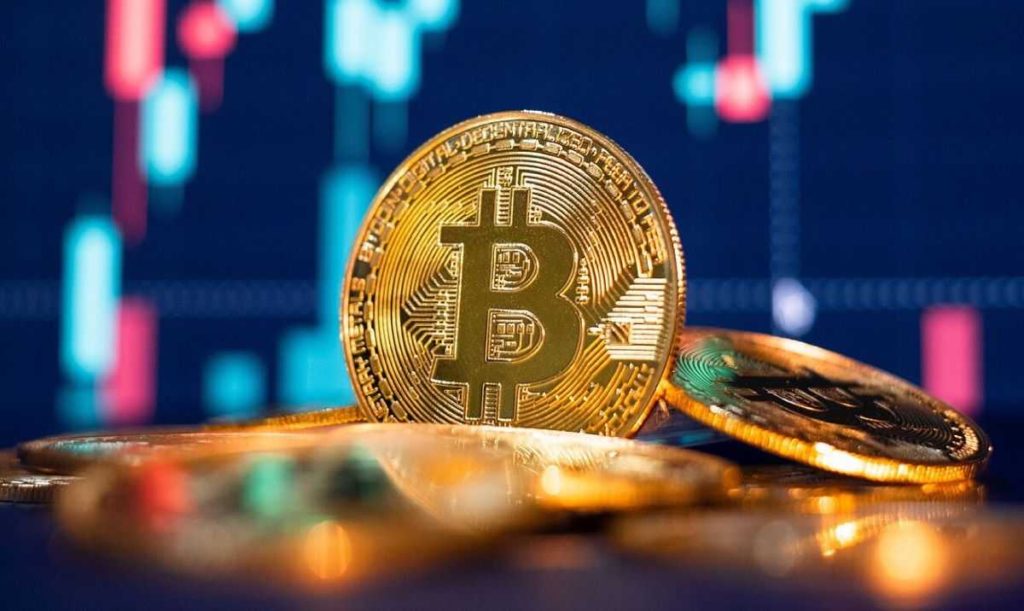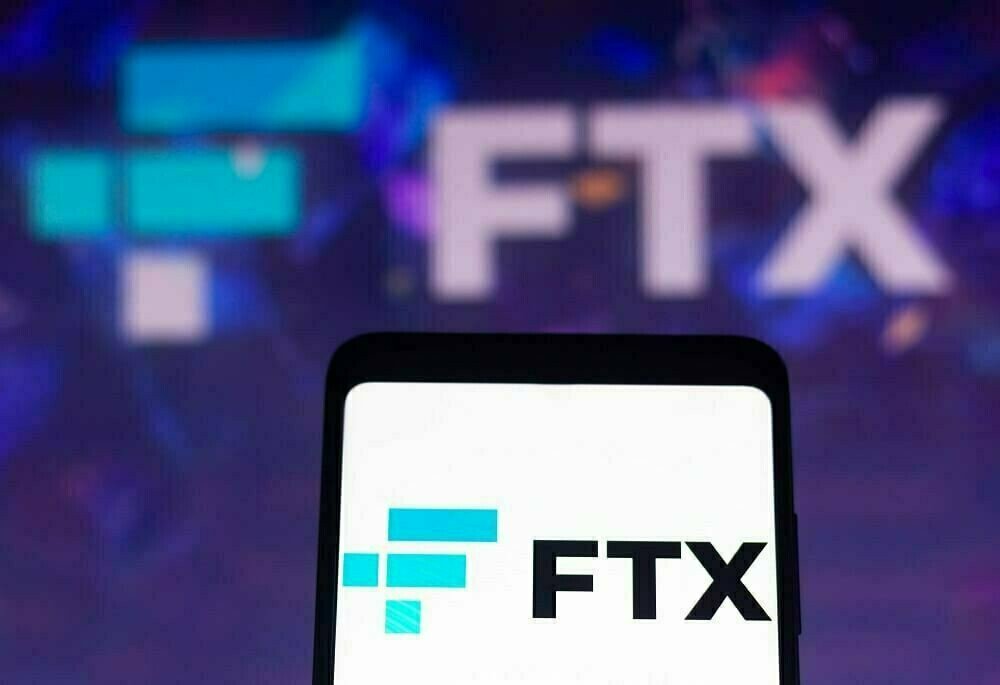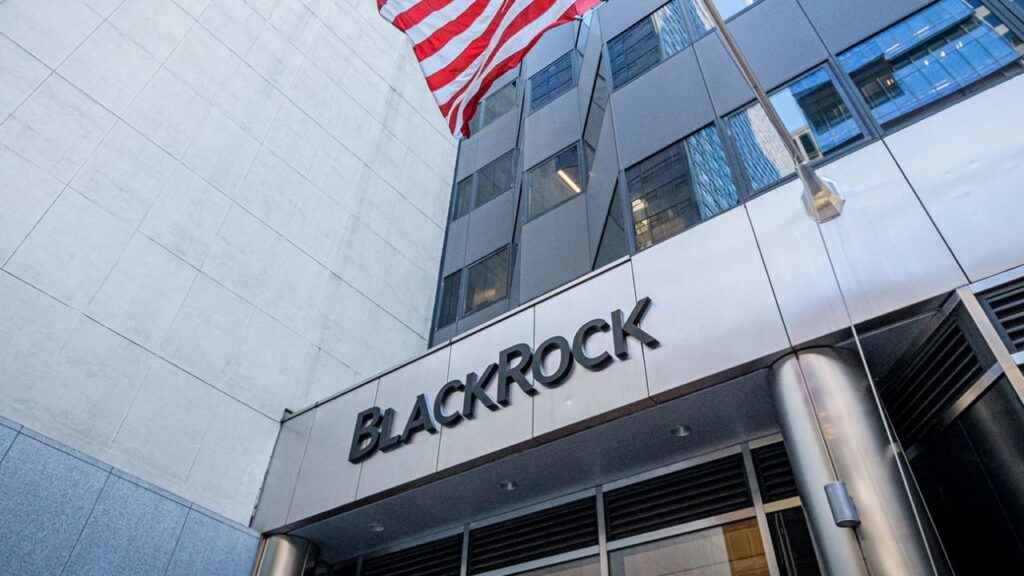The impending launch of Bitcoin exchange-traded funds (ETFs) is generating a buzz, but VanEck advisor Gabor Gurbacs suggests that their initial impact on Bitcoin might be more subdued than anticipated.
In a recent post on X (formerly Twitter), Gurbacs contended that the immediate influence of a Bitcoin ETF might be overestimated, projecting that it could attract around $100 million in net inflows, primarily from institutional investors reshuffling their existing investments.
Nonetheless, Gurbacs is more optimistic about the long-term implications of these ETFs on the Bitcoin market. He drew a parallel with the gold market, recalling how the introduction of gold ETFs in 2004 led to a remarkable surge in gold prices.
Over eight years, gold’s value surged from $400 to $1,800, while its overall market capitalization expanded from $2 trillion to an impressive $10 trillion.
Comparatively, Bitcoin’s current market cap stands at $834 billion, roughly 41% of gold’s market capitalization in 2004.
Gurbacs speculates that once a spot Bitcoin ETF is approved in the United States, it could potentially emulate gold’s growth trajectory but at a much faster pace due to Bitcoin’s fixed supply and periodic halving events.
READ MORE: Major Asset Managers Revise Bitcoin ETF Applications as SEC Deadline Nears
Furthermore, Gurbacs underscores the significance of a Bitcoin ETF in legitimizing and destigmatizing the cryptocurrency in the eyes of institutional investors and nation-states, which could pave the way for substantial investment and adoption.
Eric Balchunas and James Seyffart, ETF analysts at Bloomberg, share Gurbacs’ sentiment.
Seyffart emphasized that many observers are fixated on short-term data points, such as the immediate influx of funds into the ETF upon approval, without fully grasping the enduring impact such a financial product could have.
As for the current state of the Bitcoin market, it is trading at $42,525, having risen 1.1% in the last 24 hours, according to TradingView data.
While some believe that the anticipated ETF approval will trigger a substantial and sustained price increase, others argue that it might be a “sell the news” event, potentially leading to a different market response.
There are dozens of crypto and blockchain PR agencies to choose from, and there’s no doubt that public relations (PR) is an essential part of successfully marketing any cryptocurrency project.
After all, media coverage in relevant news sites can shape public opinion and establish a company as a respected and trustworthy brand.
In this article, we rank the three best crypto and blockchain PR firms, providing an overview of their services, results, fees, and other important considerations.
1. Imperium Comms
In first place, we have Imperium Comms. They are a Dubai-based crypto and metaverse marketing agency, working with blockchain projects and start-ups across the globe.
They have secured positive media coverage for their clients in top-tier crypto and mainstream news sites, including:
- CoinDesk
- Bloomberg
- Cointelegraph
- The Wall Street Journal
- Yahoo Finance
- Crypto Daily
- Business Insider
- The New York Times
In addition to generating positive media coverage for their clients (organic coverage and crypto press releases), Imperium Comms also offers a suite of other marketing services which can help a crypto project achieve its objectives and potentially go viral.
Somes of their other services include:
- Search Engine Optimisation (SEO) – Their team is experienced in helping businesses and websites rank on page one of Google for popular search terms.
- PR Writing – Imperium Comms offers press release writing services, in addition to other copywriting services.
- Media Buying & Banner Ads Management – They offer comprehensive ads management services, which can help crypto projects effectively advertise to their target audience via leading crypto news platforms.
The reason we’ve ranked Imperium Comms in first place is because they provide market-leading PR and marketing services, at significantly cheaper prices than other crypto and blockchain public relations agencies.

Furthermore, unlike other crypto PR agencies, they offer clients the option of paying for media coverage on an individual, results-only basis, so you don’t need to pay a monthly retainer or commit to an expensive annual PR package.
In fact, they offer organic media coverage in leading crypto and mainstream news platforms starting at just $599 per article.
Contact Details
Email: J.clifford@imperium-comms.com
2. Market Across
In second place, we have Market Across. They are a well-established crypto PR firm, based out of Israel.
They offer earned media coverage services, in addition to crypto and blockchain press release distribution.
While they are able to publish stories in some of the same sites as Imperium Comms, their prices are significantly higher and they require clients to pay a retainer.

Aside from PR, Market Across offers other crypto marketing services, such as:
- Content Distribution
- SEO
- Content Writing
- Thought Leadership
With regards to the cost of distributing a press release via their sister service, Chainwire, they charge $13,499 per PR if you go for their gold package, which includes Cointelegraph.
For comparison, Imperium Comms’ wire service – which includes Cointelegraph, Bloomberg, and other leading crypto news sites – costs just $6,999.
So, although Market Across is an effective crypto PR agency, their prices are on the high side, but still cheaper than many other crypto marketing firms.
Contact email: Info@marketacross.com
3. Melrose PR
Lastly, in third place in our crypto PR ranking, we have Melrose PR. Founded by CEO Kelley Weaver, Melrose PR is an effective crypto and blockchain marketing agency.
Like Imperium Comms and Market Across, they offer other sides aside from earned media coverage and press release distribution.
These other services include copywriting, thought leadership, and branding.
Furthermore, Melrose PR has worked with dozens of clients in the crypto and blockchain space, including:
- Decent Labs
- Moonbeam
- Foresight Ventures
- OpenNode
While their reach isn’t as strong as the other two crypto PR agencies mentioned above, they are still a good blockchain marketing firm and are worth consideration.
Contact email: Contact@melrosepr.com

Now that we’ve revealed the three best crypto PR agencies, we can explore what exactly falls under public relations – and why PR is so important in the crypto space.
What Exactly is Crypto PR?
Public Relations (PR) in the realm of cryptocurrency has an integral role to play in shaping the industry’s perception and driving its mass adoption. Crypto PR strategies harness the power of communication to bridge the gap between cryptocurrency companies and their stakeholders, be it potential investors, existing users, government entities, or the general public.
To understand the significance of crypto PR, one must first grasp the concept of cryptocurrencies and their underlying technology, blockchain. Cryptocurrencies are digital or virtual currencies that employ cryptography for security.
They are primarily based on the blockchain technology which is a decentralized ledger of all transactions across a peer-to-peer network. Cryptocurrencies like Bitcoin and Ethereum have disrupted traditional financial systems, introducing a new era of finance that promises decentralization, transparency, and efficiency.
However, despite the revolutionary aspects of cryptocurrencies, many challenges hinder their mass adoption:
- First, the complex nature of cryptocurrencies and blockchain technology can be off-putting for individuals unfamiliar with these concepts.
- Second, the volatility of the cryptocurrency market, coupled with several high-profile scams, contributes to a general perception of risk and instability.
- Lastly, regulatory uncertainty in many countries creates apprehension about the legality and future of cryptocurrencies.
How Public Relations Agencies Can Help
This is where crypto PR steps in. An effective crypto PR strategy can help overcome these barriers by fostering understanding, building trust, and influencing policy.
Fostering Understanding: Simplifying complex ideas and explaining them to a lay audience is a key function of PR. In the world of cryptocurrencies, PR professionals create and disseminate content that demystifies these technologies, presenting them as solutions to real-world problems.
This process involves hosting webinars, creating explainer videos, writing blogs and articles, and engaging in social media conversations.
Building Trust: In an industry where credibility is often questioned, establishing trust is paramount. Crypto PR endeavors to build a positive image for cryptocurrency brands, highlighting their transparency, security features, and real-world utility.
Press releases, case studies, testimonials, and thought leadership content can help a brand position itself as an industry leader. Furthermore, crisis communication strategies are essential for handling any negative events that might affect a brand’s reputation.
Influencing Policy: Crypto PR also involves advocacy work, aimed at influencing policy and regulatory decisions. By engaging with media outlets and policy influencers, crypto PR professionals can help shape a favorable regulatory environment.
READ: Former SEC Official Criticizes Ripple Ruling as ‘Troublesome on Multiple Fronts’
This often involves producing white papers, conducting industry surveys, and pitching story ideas that showcase the potential benefits of cryptocurrencies.
However, crypto PR is not without its challenges. The fast-paced nature of the crypto industry demands real-time responses.
Thus, PR professionals must stay abreast of all industry developments, regulatory changes, and market trends. Also, the global nature of cryptocurrencies requires a PR strategy that is multicultural and multi-lingual, to cater to audiences across different geographies.
How Much Does Crypto PR Cost?
Like other specialized PR services, the cost of hiring a crypto PR agency can vary considerably based on several key factors.
Agency Expertise and Reputation – As in traditional PR, crypto PR agencies that have demonstrated their expertise over time and built a strong reputation often charge higher fees.
They offer access to their vast network, crypto industry insights, and extensive experience in managing PR for crypto businesses. A well-established crypto PR agency also likely employs professionals who are deeply immersed in the crypto ecosystem and understand its nuances.
Scope of Services – The cost is largely dependent on the range of services needed. A comprehensive crypto PR campaign, including strategic planning, media relations, social media management, content creation, and crisis management, will cost more than a simple press release distribution or advisory role.
Project Duration – The length of the engagement impacts the cost. Long-term contracts, spanning over several months to a year, often come at lower monthly rates as they provide a reliable income stream for the agency and allow them to develop a deeper understanding of your project.
Geographic Location – Crypto PR agencies located in global financial hubs and major cities often charge more due to their access to bigger networks and higher operating costs.
ICO, DeFi and NFT Expertise – Given the complexity and regulatory scrutiny of Initial Coin Offerings (ICOs), DeFi projects, and NFT platforms, PR agencies specializing in these areas may charge premium rates. They bring valuable expertise in managing the unique risks associated with these projects, which justifies the higher cost.
In terms of pricing models, crypto PR agencies typically use the following:
Retainer: Retainer fees for crypto PR agencies can range significantly based on the factors mentioned above. As of 2021, retainers for a specialized agency typically start at around $8,000 per month and can go up to $30,000 or more for high-profile crypto PR firms.
Project-Based: For specific campaigns or projects, agencies might charge a flat fee. This could range from a few thousand dollars for a press release distribution to tens of thousands for a comprehensive ICO launch campaign.
Hourly: Though less common in crypto PR, some agencies might charge an hourly rate, particularly for consultation work or smaller projects. Hourly rates for specialized PR services like crypto can range from $200 to $500 or more.
While these costs might seem steep, it’s important to consider the value a specialized crypto PR agency can bring. Given the volatility of the crypto market and the rapid pace of change, having a professional team that understands the landscape can be invaluable.
A good crypto PR agency can help position your project favorably, attract the right audience, navigate potential crises, and ultimately, contribute to your project’s success. Therefore, the cost should be viewed as an investment rather than an expense.
Should I Hire a PR Employee Instead of an Agency?
Some crypto projects decide to hire an employee or a team or employees to handle their PR and marketing strategy.
While this can be effective, it’s advisable to still work with a PR agency in addition to your existing marketing employees, as they will usually have a better reach and better connections, especially in crypto PR.
As for smaller crypto and blockchain projects, it’s better to just work with a PR firm instead of hiring PR employees, as this way you have more flexibility and a lower average cost.
Xmas Sleigh Race is a widescale winter adventure for $800 000! It will be held on BetFury on December 5-26. Xmas Sleigh Race is an amazing opportunity to compete with other users and become the richest sleigh racer. You still have time to enter and win many profitable crypto rewards.
Join and share the $800 000 prize pool
Promo Code: XMASRACE
The first 500 people to register on BetFury and enter the promo code XMASRACE by December 19th will receive $16 (1000 BFG) on their bonus balance. Make an X40 wager playing on BetFury to claim your registration bonus.
About Xmas Sleigh Race
Winter holiday events on BetFury have always amazed users with their scope and generosity! This time, everyone can join the Xmas Sleigh Race and share the $800 000 prize pool. It consists of twenty-three Battles and one final race. The winner who collects the most points will obtain the main crypto reward. Moreover, the platform has already prepared many beneficial Merry Bonuses under the Xmas tree!
The Snowfall of Profitable Battles
The total prize pool of Battles is $700 000. They occur during the Xmas Sleigh Race and cover various iGaming entertainment on the platform. The main reward of Battles is not only cryptocurrency but also points for winning the final race. One point is equal to $1 000 of the total gaming wager. Let’s take a closer look at each of them.
- $40 000 Jolly Slotballs Battle: The competition for lovers of quality Slots with an exceptional winter atmosphere.
- $30 000 Live Sliding Battle: The competition for fans of Live and Table games who are interested in realistic entertainment.
- $30 000 boosted Daily Sleigh Battles: The series of twenty-one Battles with an increased prize pool in honour of Xmas.
The Final of Xmas Sleigh Race
In addition to lucrative Battles, the event has an equally profitable finale! The twenty fastest and most active racers with the maximum number of points will become the leaders of the contest table. They will share the $100,000 prize pool on December 26. BetFury will reward winners within 24 hours after the end of the Xmas Sleigh Race.
About BetFury
BetFury is an ecosystem of crypto products for entertainment and additional income. The platform has a native BFG token with many utilities. BFG is listed on many crypto exchanges: PancakeSwap, Biswap, etc. The token has over 55,000 holders, and more than 3 billion BFG are in circulation. The most profitable utility for using tokens is BetFury Staking, with the ability to daily withdraw Staking payouts.
BetFury offers over 8,000 Slots and Original games with one of the highest RTP in the industry (up to 99.02% RTP). BetFury also has 80+ kinds of Sports with odds better than the market average. Along with huge events, the platform provides profitable bonuses: Rakeback, Cashback up to 25%, and others.
Wallets connected to the now-defunct crypto trading firms FTX and Alameda Research have been in the spotlight recently, as they’ve moved a substantial $10.8 million across various platforms.
This movement was identified by the blockchain analysis firm Spot On Chain, which has been monitoring the actions of these entities since October 24th, revealing that they’ve transferred a staggering $551 million using 59 different cryptocurrencies.
The most recent transfer of $10.8 million was diversified across eight distinct tokens.
Among them, $2.58 million found its way into StepN’s GMT, $2.41 million into Uniswap’s UNI, $2.25 million into Synapse’s SYN, $1.64 million into Klaytn’s KLAY, $1.18 million into Fantom’s FTM, $644,000 into Shiba Inu, and smaller amounts in Arbitrum’s ARB and Optimism’s OP.
This saga began on October 24th when the FTX and Alameda wallets initiated a transfer of $10 million to a single wallet address.
READ MORE: Coinbase Reports Surge in Law Enforcement Requests, with the U.S. Leading the Pack
Subsequently, this amount was redistributed to accounts on Binance and Coinbase. A similar transaction of $13.1 million took place on November 1st, further cementing the pattern.
The movement of funds traces back to March when FTX and Alameda first commenced efforts to recover assets for their investors.
During this phase, three wallets associated with these entities shifted $145 million worth of stablecoins to multiple platforms, including Coinbase, Binance, and Kraken.
Notably, $69.64 million in Tether and the remaining $75.94 million in USD Coin were part of this transfer.
While it’s true that the troubled cryptocurrency exchange managed to recuperate over $5 billion in cash and liquid cryptocurrencies during this asset recovery period, it’s essential to acknowledge that its total liabilities still exceeded a staggering $8.8 billion.
This revelation sheds light on the complexities and challenges faced by crypto trading firms, even as they strive to manage and rectify their financial situations.
Swiss asset manager Pando Asset has thrown its hat into the competitive ring of the spot Bitcoin exchange-traded fund (ETF) race in the United States, surprising many with its unexpected entry.
On the same day, investment giant BlackRock engaged in discussions with the country’s securities regulator, presenting an updated ETF model based on the regulator’s feedback.
On November 29, Pando Asset submitted a Form S-1 to the U.S. Securities and Exchange Commission (SEC), the document used to register securities with the agency, outlining its Pando Asset Spot Bitcoin Trust.
Similar to other ETF proposals, this trust intends to mirror Bitcoin’s price movements, with Coinbase’s custody arm responsible for safeguarding Bitcoin holdings on behalf of the trust.
Pando Asset joins a crowded field, becoming the 13th applicant seeking approval for a spot Bitcoin ETF in the U.S., competing with heavyweights like BlackRock, ARK Invest, and Grayscale.
READ MORE: Bitcoin Holds Strong at $38,000 Amid Speculation of Price Surges and Fed’s Powell Speech
In a November 29 post on X (formerly Twitter), Bloomberg ETF analyst Eric Balchunas expressed curiosity about Pando’s late filing, wondering why it emerged at this stage.
He also raised concerns about the potential implications if Pando’s ETF were to be approved alongside others on January 10, a date he and fellow Bloomberg ETF analyst James Seyffart have earmarked as a possible approval date.
This date coincides with the SEC’s deadline to either approve or deny ARK Invest’s application.
Seyffart, however, expressed doubts about Pando’s readiness to launch its ETF on the same day as others, acknowledging that unforeseen developments can occur in this space.
Meanwhile, the SEC held meetings with executives from BlackRock and Invesco on November 28 to discuss their respective ETF proposals, as revealed in agency documents.
BlackRock presented revisions to its redemption model, addressing concerns raised during a prior meeting regarding the impact on balance sheets and the risks faced by U.S. broker-dealers dealing with offshore crypto entities.
Balchunas clarified that BlackRock’s revised approach involves offshore entities acquiring Bitcoin from Coinbase and pre-paying U.S. registered broker-dealers in cash, as these broker-dealers cannot directly handle Bitcoin.
This strategy aligns with the SEC’s requirement for ETFs to have redemption models that place the responsibility on issuers to transact in Bitcoin, avoiding the need for broker-dealers to engage with unregistered subsidiaries or third-party firms for Bitcoin transactions.
A crypto donation campaign with a noble mission to enhance the lives of children across the globe has garnered an impressive total of over $7.6 million in contributions to date.
Notably, half of this substantial sum, amounting to $3.83 million, has been generously donated in the form of Ether (ETH), a prominent cryptocurrency in today’s digital landscape.
At the time of this report, the price of ETH was hovering at $2,026.
Despite this remarkable achievement, the philanthropic foundation spearheading the initiative, known as Save the Children’s HODL Hope Campaign, finds itself approximately $2.4 million short of its ambitious goal. Their aim is to amass a total of $10 million by the culmination of the year 2023.
Breaking down the donations, Bitcoin (BTC) commands a significant share, constituting 34% of the overall crypto contributions. This translates to slightly over $2.6 million in BTC donations.
USD Coin (USDC), a stablecoin pegged to the U.S. dollar and issued by Circle, emerges as the third most favored medium for contributing to this noble cause, accounting for approximately 7% of the total donations, which equates to nearly $520,000.
Conventional U.S. dollars made up a modest 2% of the donations, followed by major altcoins such as Bitcoin Cash, Tezos, ThunderCore, Tether, Litecoin, and Solana.
READ: Submit A Press Release to Yahoo Finance
Topping the charts on the donor leaderboard are the communities “Own The Doge (DOG)” and “PleasrDAO,” whose collective contribution of 291.16 ETH, exceeding $1 million, deserves special recognition.
However, it is important to note that many donors prefer to remain anonymous and thus do not feature on the leaderboard.
A substantial portion of the campaign’s funding, to the tune of approximately $3.9 million, originates from these anonymous donors, underscoring the privacy and security attributes inherent in cryptocurrency donations.
The seamless facilitation of cross-border fund transfers via cryptocurrencies has democratized participation in charitable endeavors aimed at addressing global challenges. This trend extends beyond the purview of Save the Children’s campaign.
Notably, the Singapore Red Cross has joined the digital revolution, forging a partnership with Triple-A to accept cryptocurrencies such as Bitcoin (BTC), Ethereum (ETH), Tether (USDT), and USD Coin (USDC) for their humanitarian and community service initiatives.
Benjamin William, the Secretary-General and CEO of the Singapore Red Cross, lauds this move, stating that it welcomes a new segment of tech-savvy donors eager to leverage their digital assets for making a positive difference in the world.
In summary, the Save the Children’s HODL Hope Campaign exemplifies the growing influence and acceptance of cryptocurrency donations within the philanthropic sector, marking a significant stride toward harnessing digital assets for the betterment of global humanitarian causes.
The Bank for International Settlements (BIS) Innovation Hub has unveiled the culmination of its private central bank digital currency (CBDC) endeavor, Project Tourbillon, in its recently released 46-page report on November 29.
This initiative explores critical elements such as privacy, security, and scalability, all within the context of two prototypes designed by cryptography pioneer David Chaum: eCash 1.0 and eCash 2.0.
These prototypes introduce a promising prospect of payment anonymity for CBDC transactions.
Among the prototypes, eCash 1.0 offers “unconditional payer anonymity,” while eCash 2.0 boasts enhanced security features.
The report suggests that it is indeed plausible to implement a CBDC that ensures payer anonymity while concurrently addressing concerns related to illicit transactions.
Project Tourbillon accomplishes this by establishing complete consumer anonymity during transactions with merchants.
In this innovative scheme, a consumer making a CBDC payment to a merchant remains entirely anonymous to all parties involved, including the merchant, banks, and the central bank.
READ MORE: Submit A Press Release to Bloomberg
The merchant’s identity is only revealed to the payer and is subsequently disclosed to the merchant’s bank as part of the payment process.
Importantly, the central bank retains no access to personal payment data but maintains the capacity to monitor CBDC circulation at an aggregated level.
However, during the initial phase, all users are required to undergo a Know Your Customer procedure at a commercial bank to gain access to the CBDC, mirroring the existing financial system’s practices.
Furthermore, the responsibility for ensuring that transactions adhere to regulatory requirements, such as Anti-Money Laundering, Countering the Financing of Terrorism, and tax evasion laws, falls upon the merchant’s bank.
The report concludes that Tourbillon’s payment process seamlessly integrates with today’s payment landscape, leveraging established technologies like QR codes, proof-of-stake protocols, and existing account relationships between customers, merchants, banks, and central banks.
BIS has been at the forefront of driving global CBDC adoption, actively assisting the Swiss National Bank in the development of wholesale CBDCs and collaborating on joint platforms with central banks in countries like China, Hong Kong, Thailand, and the United Arab Emirates.
Additionally, BIS is engaged in a transaction tracker proof-of-concept project with the European Central Bank, emphasizing its pivotal role in shaping the future of digital currencies on a global scale.
California Governor Gavin Newsom is emphasizing the need for individuals to stay at the forefront of the rapidly advancing field of generative artificial intelligence (GenAI) by acquiring new skills and familiarizing themselves with this emerging technology.
A recent report has underscored the importance of providing Californians with access to educational and training opportunities related to GenAI.
The report recommends that residents of California should be offered educational and training resources in GenAI to support the state’s government workforce and prepare for the evolving skills required in the GenAI-driven economy.
It envisions state agencies providing training programs for government employees to harness state-approved GenAI tools to achieve equitable outcomes.
This move is seen as essential in response to the significant employment impact predicted by recent reports on GenAI.
The report cites Goldman Sachs’ forecast, which suggests that GenAI could affect up to 300 million jobs worldwide, even though it holds the potential for substantial productivity gains.
In light of this, the state of California aims to take the lead in training and supporting its workforce, enabling them to actively participate in the AI economy and fostering demand for businesses to establish themselves and hire within the state.
READ MORE: Australian Tax Regulator’s Cryptocurrency Tax Guidance Leaves DeFi Users in the Dark
The report also emphasizes the importance of initiating GenAI education initiatives at higher education institutions and vocational schools.
By integrating GenAI education into these institutions, California aims to equip its workforce with the skills necessary to excel in this technology-driven landscape.
Recent reports have consistently highlighted the potential impact of AI on jobs in the global economy.
The Organisation for Economic Co-operation and Development (OECD) released a report on July 12, which identified the jobs most vulnerable to AI. According to the research, “high-skill, white-collar jobs” are particularly exposed to AI-driven automation.
Moreover, industries that demonstrate the most significant advancements in AI often involve “non-routine, cognitive tasks such as information organization, memorization, and perceptual speed.”
In conclusion, California, under Governor Gavin Newsom’s leadership, is taking proactive steps to prepare its workforce for the challenges and opportunities presented by GenAI.
By offering education and training programs and positioning itself as a hub for GenAI innovation, California aims to remain at the forefront of the AI revolution while ensuring equitable access to these emerging technologies.
Hong Kong’s Hospital Authority is gearing up to confront a significant uptick in two formidable superbugs, vancomycin-resistant enterococci and Candida auris, through the power of artificial intelligence (AI).
Over the past three years, the prevalence of multidrug-resistant organisms, commonly referred to as superbugs, has seen a troubling rise on the island.
This surge can be attributed to the reallocation of resources aimed at combatting the COVID-19 pandemic.
Dr. Raymond Lai, the chief infection control officer at the Hospital Authority, explained that this shift in resources resulted in a shortage of isolation wards available for patients infected with MDROs.
He stated, “A significant number of isolation wards were allocated to Covid-19 patients, leaving fewer wards available for those infected with MDROs.”
Additionally, the COVID-19 pandemic led to a substantial increase in the prescription of broad-spectrum antibiotics, fostering the development of antibiotic resistance within these superbugs.
READ MORE: OpenAI’s CEO Turmoil Sparks Debate Over AI Regulation and Congressional Action
According to the authority, the antibiotic resistance rate of vancomycin-resistant enterococci surged from 0.22% in 2021 to 1.2% in 2023, with the number of patients carrying these microorganisms rising from fewer than 40 in 2021 to approximately 140 by late September 2023.
Candida auris, first discovered in Hong Kong in 2019, has also witnessed a spike in carriers, escalating from nearly 200 in 2020 to over 300 by October 31, 2023.
Dr. Lai cautioned that about 10% of individuals hosting this fungus could progress to invasive infections, posing a mortality risk ranging from 53% to 83.3%.
To address this pressing issue, the Hospital Authority is set to launch an AI pilot program in January 2024 at the Prince of Wales Hospital in Sha Tin and Princess Margaret Hospital in Kwai Chung.
The AI system will analyze clinical data to assess the necessity of prescribing antibiotics, initially focusing on a single popular type of antibiotic before expanding its scope to include eight other types and covering 17 public hospitals.
This initiative is not the first instance of AI being harnessed to combat antibiotic resistance.
In May 2023, researchers from the Massachusetts Institute of Technology and McMaster University employed AI to identify a new antibiotic capable of combating Acinetobacter baumannii, a bacteria responsible for numerous drug-resistant infections.
Bitcoin has taken the lead over Ethereum in terms of average daily transaction fees due to a recent surge in Ordinals-related activity on the Bitcoin network.
According to BitInfoChart data, as of November 20th, the average daily transaction fee for Bitcoin reached $10.34, while Ethereum’s fees averaged $8.43.
Bitcoin’s average daily trading fee hit a six-month high on November 16th, peaking at $18.67, while Ethereum’s fees reached $7.90.
This shift marks a significant change in the fee dynamics between the two cryptocurrencies over the past five days.
The sudden increase in Bitcoin transaction fees can be attributed to a growing interest in assets built on the Ordinals Protocol.
This protocol enables the creation of non-fungible token (NFT)-like assets and BRC-20 tokens on the Bitcoin blockchain.
After a period of relatively low activity between September 25th and October 23rd, Ordinals-based assets began to see a substantial uptick in late October, according to data from Dune Analytics.
READ MORE: Worldcoin (WLD) Faces Turbulence Amid Sam Altman’s Departure and CEO Replacement
Since October 24th, over six million Ordinal assets have been created, resulting in more than 800 BTC in fees, equivalent to approximately $30 million, being distributed across the network.
This surge in Ordinals-related activity gained momentum when ORDI, the second-largest BRC-20 token by market capitalization, was listed on Binance on November 7th.
The listing triggered increased buying activity for BRC-20 tokens, causing the price of the ORDI token to soar by more than 50% in a single day.
In addition to these developments, on November 17th, the Ordinals-based project Taproot Wizards announced a successful seed round, securing $7.5 million in funding.
This announcement further solidified the interest and investment in Ordinals-based assets and projects on the Bitcoin network.
As Bitcoin continues to outpace Ethereum in terms of transaction fees, it reflects the growing popularity and utility of Ordinals-based assets and the broader adoption of blockchain technology for creating and trading digital assets.
These developments highlight the dynamic nature of the cryptocurrency ecosystem and the constant evolution of its use cases and applications.













